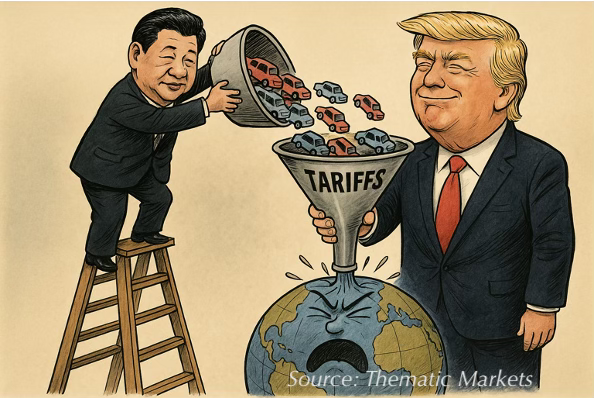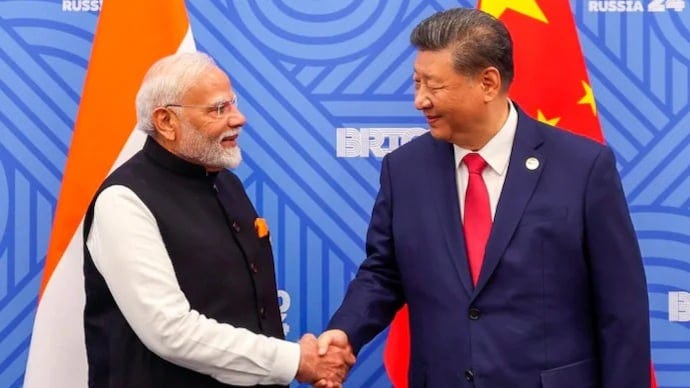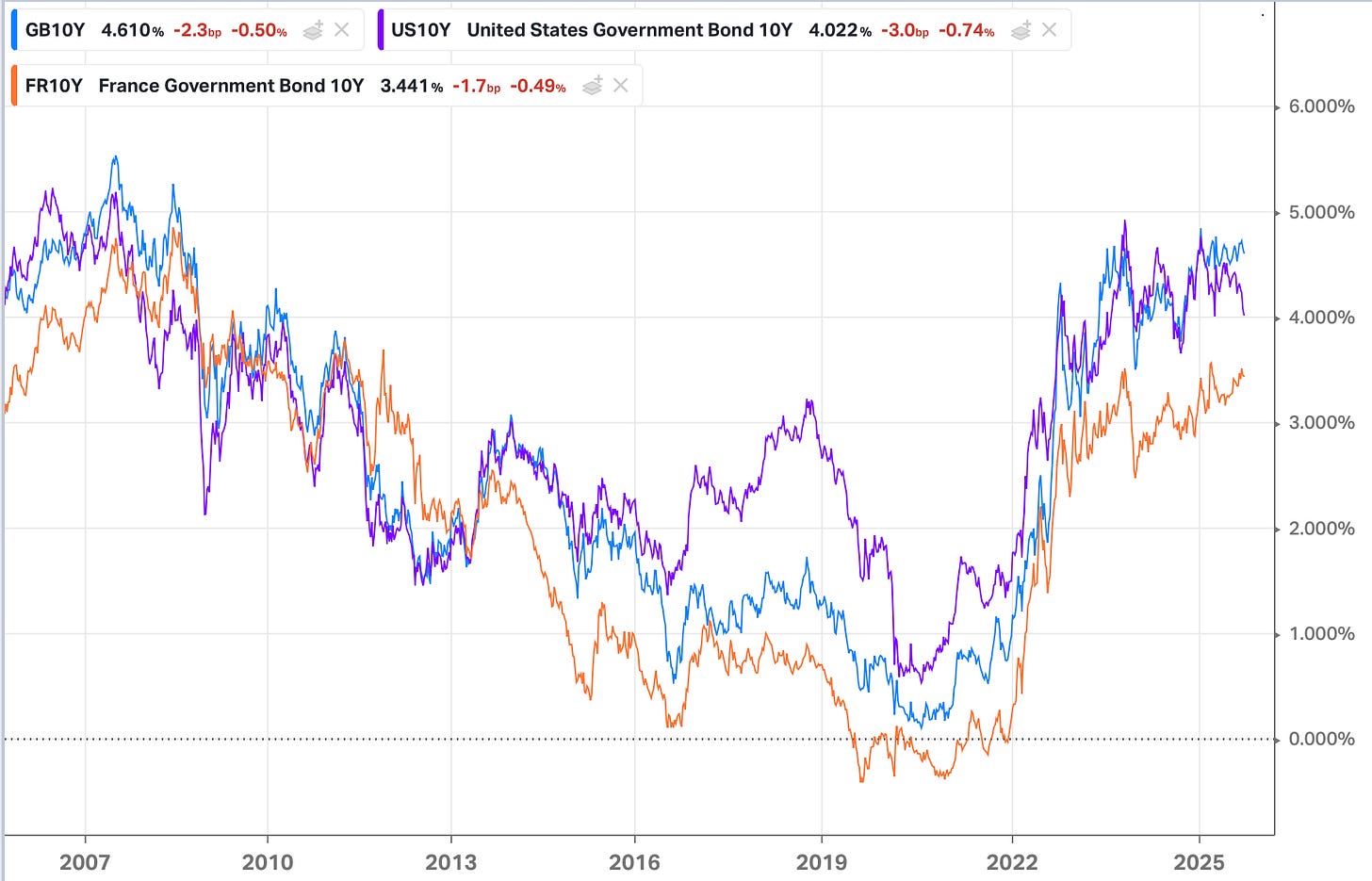YWR: Playing the South-South Boom
I had a depressing meeting this week with SABIC.
Then another terrible meeting right afterwards with Fertiglobe; an Abu Dhabi chemical company.
The meetings were awful, but it gave me an investing idea in something else, totally unrelated.
Well..related, but in a twisty, YWR type of way.
The China Funnel Effect
I’m going to get macro, shmacro, but don't worry. This macro rambling will have a money making stock idea at the end of it.
What is SABIC’s problem?
The problem is China is adding too much new petrochemical capacity relative to global growth and it’s killing prices. Same problem for Fertiglobe. And there is nothing they can do about it.
It’s that saying that when China gets into an industry nobody makes any money.
What’s happening in petro chemicals has been happening in solar panels, batteries and EV’s. It’s also happening in online shopping, LLM’s and cloud computing.
But the US has said ‘enough is enough’ and is putting up trade barriers. They see that this is actually economic warfare and manufacturing capacity matters for strategic reasons. Europe is later to the game, but starting to put up the walls too.
So where is this surge in Chinese manufactured goods going to go if access to the US and Europe is restricted?
It gets funnelled into the ‘Global South’. Africa, South America, the Gulf, India, and Turkey. It’s a concept Marvin Barth has been writing about at Thematic Markets.
And what’s the effect of this funnel?
Low income countries in EM struggle to build a manufacturing base. The exception might be if Chinese factories think they can use that country (Mexico, Egypt, Kenya, Vietnam) as a secret way to export into Europe and the US, but otherwise, local companies will wither and die.
And look at Saudi Arabia. They have lots of resources and are trying to diversify their economy with Vision 2030. And the one thing you think would be easy, creating chemicals out of their own feedstock, is running into a Chinese wall. If Saudi Arabia is struggling to make money in chemicals, then you can write off any other manufacturing. Phones, chips, TV’s, machinery, batteries, cars and robots are all going to come from China.
For Saudi Arabia, if you want to grow something stick to tourism, logistics, and services. Like Dubai.
Or build up asset management.
Do whatever you want. Just don’t try to and make stuff.
Think back to the rise of Japan, Singapore, South Korea and Taiwan in the 80’s. They moved up the value ladder from T-shirts to chips thanks to lots of hard work and the US consumer. Would those countries have been able to get off the ground if they had had to compete with the China of today? Maybe not.
And that’s the predicament for the Global South.
China is pulling the value added ladder up behind them.
Global South’s Deal with the Devil
My Indian friends are crowing about how India is not getting pushed around by Trump. They love that Modi is making friends with Xi. They tell me about the rise of the ‘Global South’. They love this picture.
But India is being pennywise, pound foolish.
They want cheap Russian oil even though it means doing a deal with the China. Long-term it’s a disaster.
What is Xi thinking in this picture? He loves this.
Yes, India… let’s be partners. Thank you very much. We will flood your economy with our goods and we will never buy anything from you. Well maybe some sugar and rice, but that’s it. Otherwise, there is nothing we need from you.
Eventually, Indian manufacturing ends up crowded out by the Chinese, just like everywhere else.
And this is the problem for the Global South and their love affair with China. It’s a dead end. They are aligning themselves with a predatory economy and military which is not looking to consume anything from these countries, except basic commodities.
So it seems terrible.
All these EM countries, which don't have the bargaining power to protect their markets, cheerfully partnering with China and ruining their future ability to manufacture and export high end goods and earn hard FX.
But maybe there is a positive.
At least for us.
The Counter Intuitive Positive
What is the accepted wisdom about the multi-decade bull market in US equities?
The story is that we gave away our manufacturing to China and in turn China reinvested those profits into the US creating a huge bull market in asset prices. Effectively, our export was our capital markets and our assets. Because if a trade imbalance is going to be sustained then the capital account has to match the current account. China had to reinvest the $’s it was earning back into the US, or else RMB would have appreciated too much and the surplus would have reversed.
And if that is the story of what really happened (although simplified), that China financed US debt fuelled consumption, and Chinese financing was a hidden tailwind behind US equity prices, and low interest rates, then what happens next?
If China is getting shut out of the US and Europe, then it needs new customers. It needs new customers somewhere else in the world. And like it did with the US consumer, it probably needs to finance those customers too.
If China is going to run huge exploitive trade surpluses with Africa, Turkey, India, and South America, it is going to have to lend them the money. It can’t take all the profits out of the country and have the FX blow out. China will have to reinvest back into these EM markets. The same way it did with the US.
The punchline: We are worried the China Funnel is going to destroy manufacturing in EM, and make them forever poor, but is the flip side that at the same time China will create massive asset bubbles there too, like with the US?
I know Trump has only been in office 9 months, and it’s hard to know what is an emerging long-term trend and what is noise. But could the surprise be that this strategy to shut China out of the US and Europe and build up US manufacturing ends up being good for the US Main Street economy but shifts the capital markets bubble to EM?
Will that be what we realise with hindsight in 10 years?
Emerging Signs
I look at the turmoil and rising bond yields in France just because they are trying to be slightly fiscally prudent. And I see the same stresses in the UK. While US yields are still stable at 4%, the broad brushstroke is that all these yields are at high levels and possibly going higher.
Is this bond market fragility the side effect of shifting the Chinese asset bubble firehose away from the US and Europe?
And then the flipside.
I look at lots of formerly weak EM currencies strengthening YTD. I see lots of EM’s where inflation is falling and bond yields have much further to fall. The opposite of what is happening in the US and Europe. And yes, I know it’s only 9 months.
And I start to wonder. Is the story of the next 10 years for emerging markets that they run big trade deficits importing lots of wonderful and inexpensive manufactured goods from China, but at the same time their bond yields fall, they borrow more, and their capital markets boom.
And should we be trying to get long the riskiest and most hated currencies in the world?
Like the Turkish Lira?
Or the Pakistani Rupee?
Oooof. I don’t know. Like I said. It’s a theory. I’m not sure I’m ready for that yet. Although give it a few weeks and I might be. Let’s see.
But I see something else interesting.
Something more in between and palatable.
Making Money in Exchanges II
In Making Money in Exchanges we reviewed our holdings in HKEX and SGX. Then we pitched the B3 ($BOLSY) as a new idea and a good way to play the upcoming bull market in Brazil.
But in a way, Brazil is relatively comfortable. Everyone talks about Brazil. Everyone knows Brazil.
I see something edgier, and cheaper, that nobody talks about, that is also set up.





